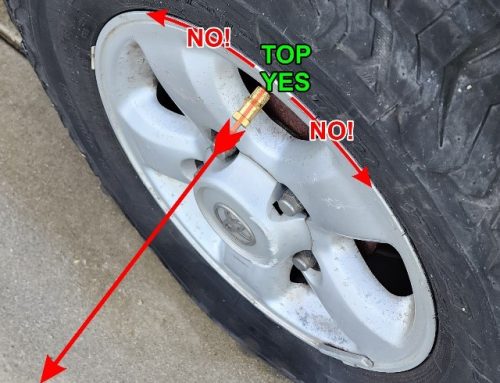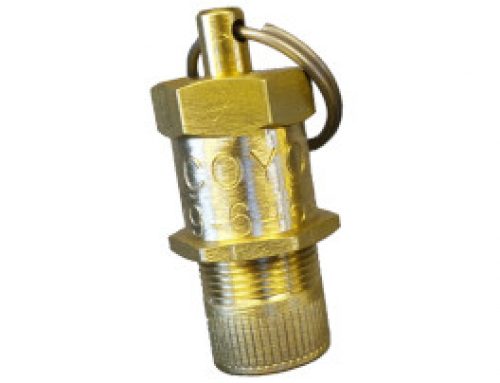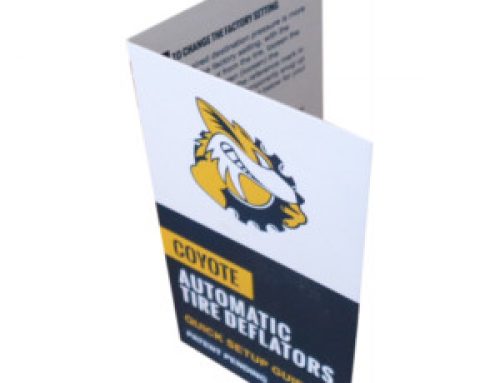AUTOMATIC TIRE DEFLATOR FAQs
FOR COYOTE LEGACY DEFLATORS ONLY
THIS ARTICLE CONTAINS INFORMATION ABOUT COYOTE LEGACY DEFLATORS. LEGACY DEFLATORS HAVE DIFFERENT SPECIFICATIONS, ASSEMBLY AND MAINTENANCE INSTRUCTIONS FROM THE NEWER COYOTE VORTEX V2 DEFLATORS. IF YOU ARE UNSURE ABOUT WHICH COYOTE DEFLATOR YOU OWN, READ THIS ARTICLE BEFORE ATTEMPTING TO ADJUST OR MAINTAIN YOUR COYOTE DEFLATOR.
CAUTION:
Low tire pressure makes for unfamiliar vehicle handling. Never deflate your tires unless you have a way to reinflate them to the pressure recommended by your vehicle or tire manufacturer. Compressed air (gas) presents several hazards, so always use protective eyewear when setting or using your Coyote Automatic Tire Deflators. Never completely remove the Adjustment Cap from the Main Body while screwed on an inflated tire. This will shoot parts out of the deflator body and may result in serious injury.
What do Coyote Automatic Tire deflators do?
When screwed onto your standard tire valve stems, they automatically start airing down all four tires at one time and automatically shut OFF at the destination pressure you have chosen to air down to. Click here to learn how the Coyotes work.
What are the advantages of Coyote deflators over Stauns?
WHERE ARE COYOTES MADE?
Coyotes are made by Americans in the USA.
Stauns are made down under in Australia.
WHAT IS THE COYOTE WARRANTY?
Coyotes have a LIFETIME WARRANTY. See Warranty here.
The Staun warranty is only 5 years and subject to limitations discussed below.
SELECTING WHAT TO BUY – With Stauns, you have to guess between one of three part numbers (SCVLT, SCV5 OR SCVHD) as to what to buy or buy several part numbers. With Coyote, just one part number covers the equivalent of all three Staun part numbers. That makes the Coyote CED456 a no-brainer decision. Kinda like 3 for the price of 1!
DESTINATION PRESSURE RANGE – Destination pressure is defined as the pressure you air down to. Coyotes are totally adjustable for any pressure between ~1 PSI to ~65 PSI. The Coyote CED456 automatically starts deflating from street pressure and automatically stops at your destination pressure. All three Staun part numbers only cover less than that.
CAN I BUY COYOTES PRESET TO MY AIR DOWN PRESSURE? – For the Coyote CED456, YES, at no additional cost! Staun does not offer this option. Check our store for other money-saving Coyote part numbers without this option.
4-TIRE DEFLATION TIME – The Coyote CED456 is about 15% to 25% faster than the Staun SCV5.
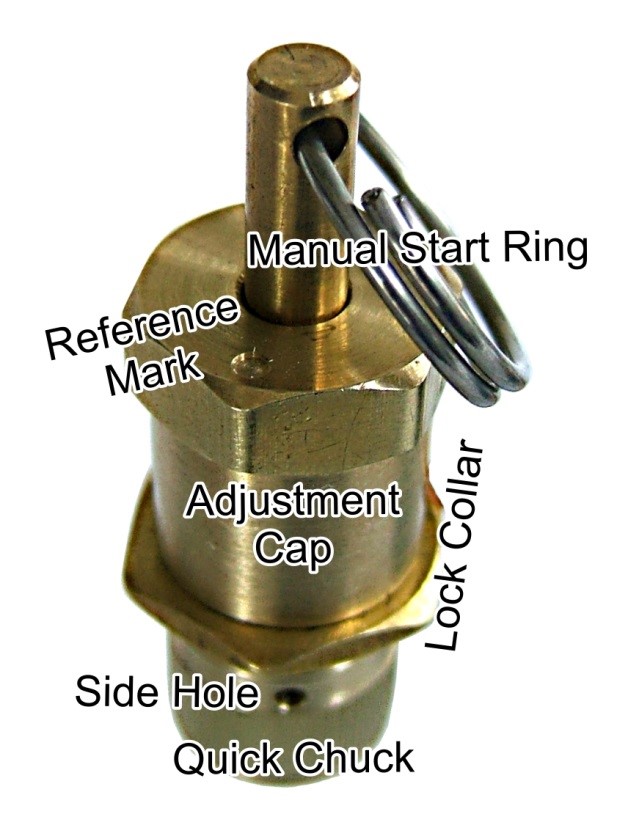 WHAT’S THE “QUICK CHUCK” ON THE COYOTE DEFLATOR? – The Coyote CED456 is made with half the valve stem attach threads as compared to all other deflators, Staun included. That means that it takes about half the time to screw them on and off saving even more air down time.
WHAT’S THE “QUICK CHUCK” ON THE COYOTE DEFLATOR? – The Coyote CED456 is made with half the valve stem attach threads as compared to all other deflators, Staun included. That means that it takes about half the time to screw them on and off saving even more air down time.
EXTRA SPRINGS – The Coyote CED456 has 4 extra springs. Stauns have none.
WHAT ARE THE DEFLATORS MADE FROM? – Both the Coyotes and the Stauns are made from brass with stainless steel springs. However, the Coyote seal uses a softer silicone pad. The Staun uses a harder, conventional O-ring. The softer silicone pad means absolutely no leakage at low destination pressures.
SET PRESSURE LOCK SECURITY – You lock in your Coyote CED456 pressure setting as securely as you want using open end wrenches on the hex Adjustment Cap and Lock Collar. You can only lock in the Stauns by hand using the knurled cap and collar. If you use tools, you void the warranty. Stauns can lose your hard-earned settings with use.
ADJUSTMENT CAP REFERENCE MARK – The Coyote CED456 has an Adjustment Cap reference mark. Stauns have no mark and you are always left guessing, “Did I turn that exactly a complete half turn?” The Coyote reference mark makes fine tuning a breeze!
ADJUSTMENT RATE – The Coyote CED456 adjusts at the rate of 4 PSI per Adjustment Cap revolution. The Staun SCV5 adjusts at the rate of 8 PSI per Adjustment Cap revolution. Coyotes are twice as easy to dial in.
DESTINATION PRESSURE REPEATABILITY – The Coyote CED456 is repeatability within ± 0.2 PSI. The Staun SCV5 is less predictable. Check out our automated, destination pressure repeatability and life cycle test setup here.
CHEAP KNOCKOFFS – The Coyote is protected by a USA patent and there are no knockoffs. The Stauns are not USA patented protected and inferior performance knockoffs, under many, many different brand names, are sold throughout the USA. Further, the knockoffs do not use stainless steel springs. That’s a nightmare if you wheel on the beach or for that matter, anywhere unless you air up with dehumidified air! Click here to see how to tell a knockoff from a genuine Staun.
MAY I INSTALL AND HIT THE TRAIL? – For the Coyote CED456, yes, install and then hit the trail. However, you void the warranty if you drive with the Stauns installed.
Now, a word to the wise: Given a bashing contest between the rubber valve stem, an all brass Coyote and a rock, we are convinced that the valve stem will lose more times than the Coyotes. We recommend that you remove the Coyotes at your first opportunity.
MANUAL START – The Coyote CED456 has an easy to use Manual Start Ring (see above). For the Stauns, you are forced to use the small, fingernail notch in the top of the spring shaft. Stauns are more difficult to manually start.
DEFLATOR LENGTH – The Coyote CED456 is about ¼” shorter than the Stauns making it easier to fit into certain tight wheel situations.
What is the Destination Pressure Range?
The Coyote Automatic Tire Deflator’s destination pressure range is guaranteed to be 1 to 65 PSI. It takes three Staun part numbers to come even close to this range – the SCVLD destination pressure range is 1 to 10 PSI, for the SCV5, the range is 6 to 30 PSI and the SCVHD, the range is 15 to 55 PSI. Plus, you only have to buy one set of Coyotes to cover the Staun entire product range.
How do you use Coyote deflators?
You simply screw all four Coyote deflators on to your standard tire valve stems and either drive off (Coyote’s only) or wait for them to stop deflating, remove and then move out. We do, however, recommend that you remove the deflator at the first opportunity to avoid damaging either the tires’ valve stems or the deflators. Drive off with the original Stauns, manufactured in Australia, and you void the warranty.
If left on the wheel, Will Coyotes restart with spin and bounce?
No amount of tire spin or bounce will restart the Coyote deflator. The patented silicone seal design ensures that will not happen.
How do you set Coyote tire deflators?
You loosen the Lock Collar and screw the Adjustment Cap in or out to increase or decrease the destination pressure. The Adjustment Cap Reference Mark on the Coyotes makes this easy. Read more about that in the Quick Setup Guide included with every set ( click to download a copy). Also, download our more detailed instructions here.
Does the street tire pressure matter?
No. The Coyotes will either automatically start or you can pull the Manual Start Ring to start airing down under any circumstance. The patented Coyote deflators are designed to handle up to 300 PSI start pressure.
Does the Manual Start Ring have other uses?
Most certainly! As tires warm up, the pressure increases. To pick up that cold morning air down pressure increase, just screw the Coyotes back on the valve stems, pull the Manual Start Rings and wait for them to shut OFF. Expect only a few seconds of air flow, since the pressure increase is typically only 2 or 3 PSI.
My coyotes seem to occasionally stick on, what’s up?
This could be due to contamination within the Coyote, but is more likely due to using the Manual Start Ring. Pulling this hard and up sidewise typically jambs the spring shaft up on the piston and stays open for ever. Gently put and release the ring straight up and down and it will perform normally.
How can I take some of the work out of setting my coyotes?
Consider this. Test your adjustment twice before making the next change. It’s kinda like the Coyotes have to “settle in” after each adjustment. This apparent “extra work” may be worth it.
What is the WARRANTY on Coyote Automatic Tire Deflators?
Coyote Automatic Tire Deflators carry a LIFETIME WARRANTY.
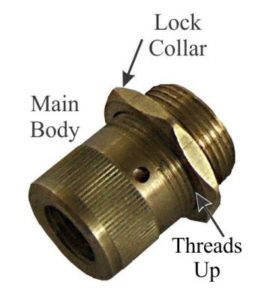 Do Coyote deflators require any maintenance?
Do Coyote deflators require any maintenance?
Coyote Deflators require no maintenance other than an occasional cleaning. Our dirty offroad environment dictates this. Also see the corrosion comment just below.
Do I need to reset the deflators after cleaning?
Yes, but you can minimize the resetting work by following this simple hint. Before disassembly, the prudent will count the number of threads the Lock Collar is up from fully down on each deflator. Better yet, just leave them in place during cleaning. Reassemble with this in mind and your destination pressure setting will be very close, Take note that the number of threads “up” varies from deflator to deflator. Click for full details.
Should I lubricate my Coyote deflators?
Contrary to other brands, lubrication is not recommended for the Coyote deflators. Lubricants collect dirt which leads to malfunction – jamming ON. Do not use traditional lubricants like WD40®, 3 IN ONE OIL®, spray silicon and grease. A dirty deflator will stick ON. If you feel you must lubricate your Coyotes, use only a military grade graphite powder that does not contain quartz or other abrasive additives.
My long, small diameter deflators usually stick on? What’s up?
I’ll make a couple of guesses. First, I’ll bet that you use an Allen wrench to adjust them. Secondly, you may use CO2 to air up. This brand uses a rubber ball to make the seal. Dry, unlubricated rubber does not slide easily even on slick aluminum, so the balls must be occasionally lubricated with grease. Grease collects dirt and can jamb the deflator open. Also, it can freeze up, but how? OK, here it comes (TMI, TMI, TMI)! That is due to a thermodynamic quality known as entropy and here’s a way to bring that techie tongue-twister into perspective. It basically how and why refrigerators work. Pucker up like you are going to whistle. Now, with your mouth an inch away from you hand, blow. Feel the cold? Now, open your mouth as if you were saying, “OH!”. Again, breath out on you hand. Feel the heat? When you force air through a small hole, like the small hole in your in your long deflator, the exhausting air may cool and possible freeze up the entire deflator. Frozen grease prevents the rubber ball from moving and may jamb it open. Freon is the best such gas and CO2 cools much, much better than air. Now, air down after a freezing night in the snow and I’ll bet money, marbles or chalk that all four will stick open. Class dismissed and there will be no test – LOL!!
What about corrosion?
Despite the Coyote deflators being made from stainless steel and brass, brass does darken, so store them in the storage pouch in your console. Eating salty food like French fries and then using the deflators with salty fingers is also a no, no. If you air up on or near the beach or ocean, your compressor is filling the tire with moist, salty air. The next time you air down with the deflator, the salty air contaminates the deflator as it passes through. For this, we recommend cleaning the deflators every year or so if you frequently wheel on the beach.
May I run without valve caps?
This is not recommended! Dirt and other contaminates get in the valve core area. The next time that you use your Coyotes, guess where that dirt goes? Right, straight into the deflators contaminating and sometimes jamming any deflator, regardless of brand, ON. Use valve caps and reduce the chance of contaminates ever entering the Coyotes.
I lost one of my Coyotes. may I buy just one?
As much as we’d like to say yes, it is impractical for us to sell just one, but we do sell sets of two for the motorcycle world and other uses like airing down your trailer or camper dualies. The CED246 comes with a neat little tube storage container and Protective Deflator Joiner. Otherwise, all deflators are exactly the same.

